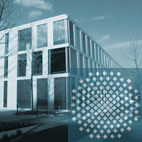 |
 |
@inproceedings {INPROC-2016-55,
author = {Felix Baumann and Oliver Kopp and Dieter Roller},
title = {{Universal API for 3D Printers}},
booktitle = {INFORMATIK},
editor = {Heinrich C. Mayr and Martin Pinzger},
publisher = {Gesellschaft f{\"u}r Informatik e.V. (GI)},
institution = {University of Stuttgart, Faculty of Computer Science, Germany},
series = {Lecture Notes in Informatics (LNI)},
volume = {P-259},
pages = {1611--1622},
type = {Conference Paper},
month = {September},
year = {2016},
isbn = {978-3-88579-653-4},
language = {English},
cr-category = {H.4.1 Office Automation},
ee = {http://subs.emis.de/LNI/Proceedings/Proceedings259/1611.pdf,
http://www.informatik2016.de/},
department = {University of Stuttgart, Institute of Computer Science, Architecture of Application Systems;
University of Stuttgart, Institute of Computer Science, Computer-aided Product Development Systems},
abstract = {With this research we propose the implementation of a overlay restful API for
3D printers to expose these machines to the Internet for utilization within
cloud services. This is to abstract the underlying communication structure and
means for accessing and controlling a 3D printer resource which is performed in
one of three ways. The ®rst method of accessing and controlling a 3D printer
is via a proprietary protocol or a printer driver in Microsoft Windows. The
second method is the control via a USB-serial connection between a controlling
computer and the printer resource. This protocol can either be proprietary or
based on open standards like GCODE (ISO 6983-1:2009). The third method of
control is based on physical storage devices attached to the printer with
machining instructions stored on them. This research excludes the communication
and control means involving proprietary protocols or drivers due complexity
restrictions within the implementation. The approach is designed with
extensibility in mind so that future access to proprietary protocols can be
added to the control API. Printer resources with only the third control method
available are also excluded from this research as they are currently lacking
the capability to be remotely controlled. This work describes the design and
implementation of an abstraction API layer between varying soft- and hardware
components with an extensible architecture for future hard- and software
components for within the domain of Additive Manufacturing (AM).},
url = {http://www2.informatik.uni-stuttgart.de/cgi-bin/NCSTRL/NCSTRL_view.pl?id=INPROC-2016-55&engl=1}
}
|
|
